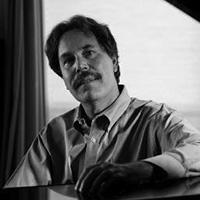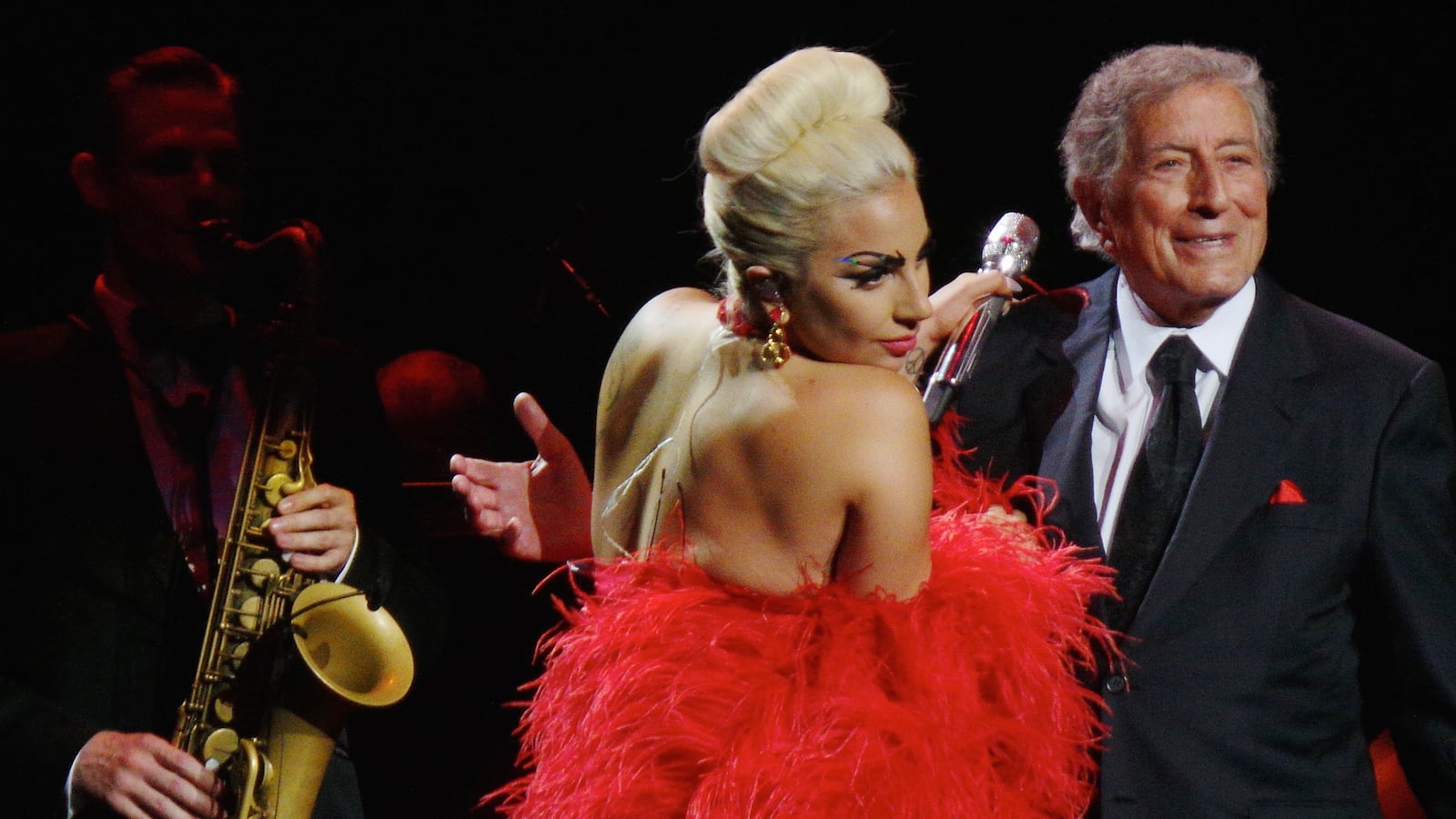I’ve been hearing jazz in the most unlikely places lately.
I didn’t expect to encounter a trumpeter playing New Orleans style jazz on the new Beyoncé album Lemonade. But that’s exactly what I found on the “Daddy Lessons” track. This jazz intrusion didn’t prevent Lemonade from rising to the top of the Billboard chart. “Daddy Lessons” even showed up on the Billboard Hot 100.
A few days earlier, I was listening to Kendrick Lamar’s Untitled Unmastered album, a hip-hop bestseller that also leaped to the top of the Billboard chart immediately after its release. I was dumbfounded to hear the chord changes to Miles Davis’s “Nardis” in the background to one of the songs. I guess I shouldn’t be surprised. Lamar frequently collaborates with jazz musicians, yet this nod to a fairly abstract 1958 jazz composition almost seemed like a coded message to the cognoscenti.
Then there was the high-profile televised jazz celebration at the White House on April 29, with Sting and Aretha Franklin in attendance—the biggest presidential jazz event in more than two decades. Three days before, Pitchfork—a periodical slavishly devoted to pop, rock, hip-hop, and R&B—published an issue of its quarterly review entirely devoted to jazz. Around this same time, Bob Dylan released his second project devoted to jazz standards. Willie Nelson is trying to match it with his recent Gershwin tribute album.
What’s going on?
I see the same phenomenon when I look at the movie listings. Hollywood is now promoting competing jazz bio-pics. You can choose the Miles Davis movie, featuring Don Cheadle, who has an acting Oscar nomination on his resume. Or you can pick the Chet Baker film with Ethan Hawke, who also has an acting Oscar nomination on his resume. And these come on the heels of other recent films with a jazz twist, including two other Oscar winners—the 2015 Amy Winehouse documentary Amy and Whiplash from 2014—and last year’s Emmy-winning Bessie Smith bio-pic on HBO.
Is 2016 the Year Jazz Came Back? Recall that January kicked off with the release of David Bowie’s final album, Blackstar, on January 8. It also reached the top of the chart with jazz backing on every track. As Bowie prepared his last project, he hired some of the leading jazz musicians in the world, and gave them the freedom to push the limits of his songs. Yet far from hindering the commercial potential of the album, this jazz element only seemed to add to Blackstar’s allure and success.
Of course, all of this comes on the heels of Lady Gaga’s rediscovery of jazz last year. I learned the power of that crossover market firsthand when Ms. Gaga retweeted one of my jazz musings, and my Twitter account started ringing like a Vegas slot machine with a mega-jackpot. I soon had 5,000 more retweets, and a bunch of “little monsters” (as the Lady affectionately calls her fans) following my staid feed.
Welcome to the strange jazz resurgence of the new millennium. Jazz is definitely hot again … yet all of this is happening outside of the jazz world.
This is a peculiar turn of events. Jazz record sales are stagnant—stuck at around 2 percent of total industry revenues—and show no sign of breaking out of that tiny niche. Jazz festivals are booking fewer jazz artists than ever before. Jazz radio stations are an endangered species. I’m not exaggerating: there are more panda bears than jazz radio hosts earning a living wage.
But jazz still possesses its mystique. The mainstream audience might not hang out at the jazz club, but it still respects jazz, perhaps even more than it did in the glory years for the idiom. In an age in which much of our music-making has shifted from human beings to samples, software, and machines, these artisan performers stand out all the more. Jazz, despite its anemic economic prospects, has become a touchstone for craft and excellence. Music superstars aren’t embracing it out of charity, but to enhance their own credentials.
How do jazz insiders react to this turn of events? Many are unaware or indifferent. Others even respond with hostility. The recent ascendancy of saxophonist Kamasi Washington, Lamar’s collaborator on hip-hop projects, to crossover stardom has generated a backlash, especially among older jazz fans. When Washington’s album The Epic won the NPR jazz poll last year, the venerable critic who organized the poll even felt compelled to publish his own vigorous dissent. (Full disclosure: I voted for The Epic in the poll, and also picked it as the most important jazz album of the year.)
The wider music audience doesn’t pay much attention to this rearguard movement in the inner circles of jazzdom. The people who buy albums from Kendrick Lamar, Lady Gaga, and David Bowie don’t read jazz critics. And these members of the audience hold the key to the jazz resurgence of 2016. The big question remains: will a significant number of them embrace the jazz idiom after this introduction?
There’s no guarantee that jazz musicians can benefit from this new-found notoriety. Trumpeter Roy Hargrove appears on D’Angelo’s Black Messiah, which won the Grammy for best R&B album earlier this year. How did this benefit his career? When Hargrove was recently asked why he hadn’t released a new studio album since 2009, he concurred with his manager’s verdict that “nobody’s buying anything anymore.”
On the other hand, Kamasi Washington has parlayed his hip-hop credentials into jazz stardom and sold-out performances. When he fronts his own band, he plays serious jazz, undiluted for crossover appeal, yet has somehow found a huge audience for this music. There is no shortage of naysayers among older jazz fans, but it’s hard not to look at the Kamasi effect and see it as heralding the path by which the art form reinvents himself as it approaches next year’s hundredth anniversary of the first jazz recordings.
I should point out that the jazz world has been planning its own comeback, but a very different one. Many of the most influential insiders in the art form believe that jazz should be revived with non-profit organizations, jazz museums, and academic respectability. They see classical music and opera as the role models, and want to develop the future of jazz along the same lines.
I beg to disagree. Jazz should celebrate its heritage, but it can’t live in the past. It needs to bring jazz to schools and communities, and the art form deserves help from nonprofits, but when this institutionalization become the main support structure for the music, it loses much of its vitality and turns into a kind of cultural vitamin or nutritional supplement. “Take this, it’s good for you,” has never been a successful marketing campaign. The jazz revival that’s happening in 2016 isn’t taking place in a museum, and is all the stronger for that fact.
Even old-time jazz fans may be pleased with the end result of this process. I can easily envision fans introduced to jazz via Kendrick Lamar or Lady Gaga moving deeper into the art form. Strange to say, hip-hop or pop in the year 2016 might be the gateway drug for the next generation of devoted jazz lovers.
Of course, I could be wrong. There’s a risk that this resurgence will have little impact on the jazz economy, and musicians in the idiom will continue to struggle just as before. Under this scenario, jazz music will continue to represent 1-2 percent of music sales. Pop and R&B stars might enhance their artistry by drawing on jazz, but it won’t make much difference to your average saxophonist or trumpeter. Most music fans will remain blissfully unaware of the riches that jazz has to offer.
The best way for the jazz world to avoid this second scenario is for the music’s advocates to embrace these exciting new hybrids. Jazz has always benefited from a dialogue with popular music. That was true in the ’20s and the ’40s and the ’60s … and it’s still true today.
I’d like to see jazz labels and festivals create bold new paths of dialogue between old and new, insider music and mainstream styles, established pros and up-and-coming youngsters. I’d especially like to see musical exchanges in which jazz musicians are more than just window-dressing for a pop star, but help dictate the terms of engagement for new ways of thinking about commercial music.
But the first step in this process is for all participants to have an open mind. Instead of bringing back the shortsighted jazz wars of the past—in which proponents of one jazz style felt compelled to dismiss the validity of other approaches—let’s celebrate the diversity and cross-fertilization opportunities presented by the remarkable events of 2016.
This may be the best opportunity jazz lovers will ever have for bringing their case to the broader public. It would be a shame if they squandered it by elitist disdain for the very musicians who are embracing jazz and bringing it to tens of millions of new listeners.






